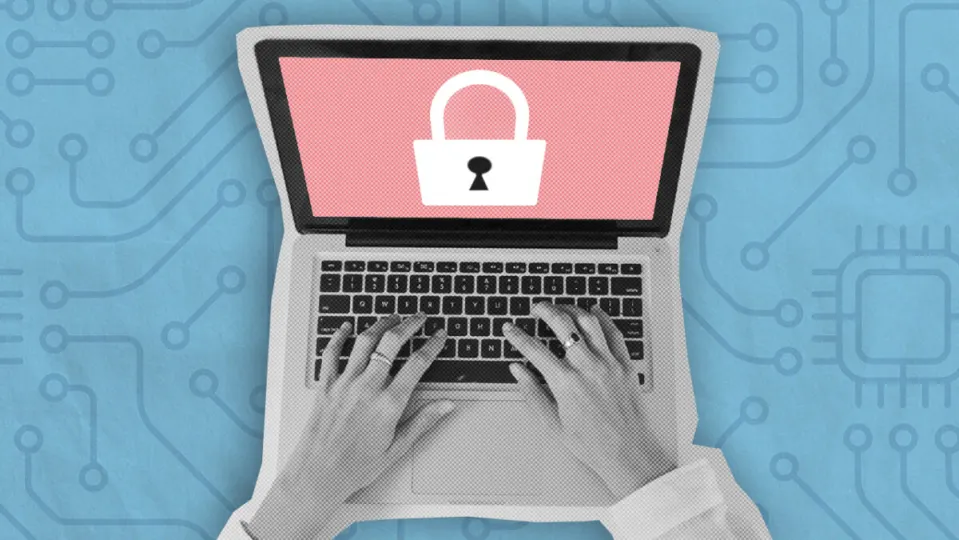2024 is the year that cybersecurity is changing forever. The rise of generative AI in 2023 has paved the way for new threats, but also defenses.
Besides ChatGPT and Google Gemini, there is growing use of AI to ramp up defenses against cyberthreats. Threat actors will increasingly use AI to create new threats faster and more dangerous.
The rise of AI threats increases the importance of cybersecurity. This is the case for home users, small and medium-sized companies, and organizations.
The Cybersecurity Trends of 2024
Google’s cybersecurity forecast 2024 sees AI as the major cybersecurity trend of 2024 and the company is not alone in its assessment.
The rise of AI
Artificial Intelligence, more precisely large language models, have seen exponential growth in 2023 and early 2024. While news coverage focuses on the generative aspects of AI, it is paving the way for new cybersecurity uses.
AI will be used by threat actors, security companies and researchers alike.
AI is a tool, which means that it can be used for good or bad. Countries like the United States are already drafting new laws to protect against harmful AI generated content, including deepfakes.

Use of AI by Threat actors
Attackers will incorporate AI into their operations to
- create advanced phishing campaigns.
- improve documents, websites, and other content.
- create deepfakes.
- code new malware.
- create fake chatbots.
- analyze stolen data quicker.
- scale operations.
Deepfakes, for example, are already a widespread problem. AI allows attackers to use images, videos, or audio from any person to create deepfakes. The better the source material, the better the deepfake and the harder it is to detect it as a fake.
Celebrities like Tom Cruise, Taylor Swift, or Barack Obama were all subject of deepfake videos posted online already. While celebrities are prominently targeted, deepfakes can be created of any person, living or even dead.
Deepfakes may be entirely audio-based. Voice cloning requires less than 1 minute if voice data to create AI voice clones of human voices.
AI and machine learning may help automate code or create functions and code from scratch. Automation may speed up the creation of malware, including new malware strains created entirely by AI.
Data may also be analyzed quicker with the help of AI. Threat actors may use AI to extract important data from vast sets of data more quickly.
Use of AI in Cybersecurity
The use of generative AI in cybersecurity is still in its early stages. Products like Microsoft’s Copilot for Security assist security researchers and professionals in several ways already:
- Analyzing large data sets and data signals.
- Recommending actions based on the analysis.
- Drafting reports, presentations, and summaries.
- Offer guidance using natural language.
Google announced that it is implementing AI tools to improve security of core services such as Gmail.
Ransomware is still a major threat
Ransomware attacks saw a sharp increase in 2023. This can be largely attributed to a rise in Ransomware-as-a-Service products, which make ransomware kits available to a larger audience. These kits require less technical expertise and are often not expensive.
Organizations remain the main target of ransomware attacks, but individuals continue to be targeted as well.
Ransomware creators will start using AI to create sophisticated attacks that will be harder to detect and defend against.
Ransomware remains the top threat in the Allianz Risk Barometer 2024 top business risk for 2024 report.

Cloud Service attacks
Cloud services continued to grow in 2023. IDC Research saw an increase by 19.2% alone in the first half of 2023 with revenue reaching $315.5 billion in that period.
Attacks against cloud-based platforms increase as organizations and individuals continue moving data and services to cloud infrastructure.
There are numerous types of cloud computing attacks, including:
- Denial of Service (DoS) attacks to block access to Internet resources.
- Account takeovers.
- Misconfigurations that allow attackers to bypass security protections or access improperly protected data.
- Malware distribution.
New trends, including remote work and work from home, continue to play a role in 2024. These require robust remote access solutions to protect users and data from a growing number of threats.
Increase in Internet of Things cyber attacks
The number of users and devices connected to the Internet continues to rise. About two-thirds of the world’s population should have access to the Internet by mid-2024 according to estimates.
This number pales in comparison to the number of Internet of Things devices expected by 2025. About 64 billion IoT devices are estimated to be available by then.
Security updates for these devices, as well as protective features, remain pivotal to counter a growing number of attacks targeting these devices.
The creation of standardized security protocols plays an important role.
Integration of AI services to monitor and control Internet of Things system will also see increased adoption in 2024 and beyond.
5 Tips to stay protected in 2024
- Password managers and management
- Two-factor authentication and passkeys
- Software and operating system updates
- Antivirus and security solutions
- Backups
Password Management
Passwords remain the main form of authorization in 2024. Selecting unique strong passwords is essential, considering that data breaches increased significantly in 2023.
Here, attackers target cloud databases to analyze user databases. Weak passwords are widely known, and the performance of computers continues to increase as well.
Current generation computers crack 8-character passwords in less than 5 minutes, even if numbers, upper and lowercase letters, and symbols are used.
Password managers, such as NordPass or Bitwarden, create strong passwords instantly and store them securely. A strong 16-character password would take modern computers 77 million years to crack.
Password managers may sync data between all devices, provided that the application supports the platform. This makes all passwords available on all devices.

Two-factor authentication and passkeys
Second factor authentication improves security significantly. Here, users need to differentiate between two types:
- Weak two-factor authentication – These systems submit the required code in cleartext.
- Strong authentication – Use of encryption or on-device generation.
Two-factor authentication apps like Google Authenticator, Microsoft Authenticator, or Aegis generate codes securely on mobile devices.
Passkeys is an up-and-coming security standard. It uses cryptographic keys instead of passwords, which offers advantages:
- The private key part never leaves the user’s system.
- There are no passwords that need to be remembered.
The downside is that it is not used widely yet. Usage is increasing, however. Companies like Adobe, Amazon, Apple, Google, Nintendo, Sony, or Microsoft support passkeys already.
Most operating systems, including Windows, Android, iOS, and macOS, support passkeys. More and more password managers add support for passkeys as well.
Software and operating system updates
Software and operating system updates continue to play an important role in security. Many software companies release security updates regularly. This is true for operating system updates, but also for applications, including web browsers and other essential programs and apps.
The threat of 0-day vulnerabilities increased in 2023 again. Google observed 97 0-day vulnerabilities that were exploited-in-the-wild in 2023.
61 of these targeted end user platforms, 36 enterprise-focused technologies. Major software, including operating systems and web browsers, receive scheduled security updates.
Google Chrome, for instance, is updated once a week to implement fixes for security issues. Microsoft releases security updates once a month for Windows.
The discovery of 0-day vulnerabilities
Antivirus and security solutions
Most operating systems include security protection. Microsoft’s Windows operating system is protected by Microsoft Defender by default.
Third-party security solutions may improve security on systems. They may offer additional security features, for instance access to an advanced firewall, online account monitoring, or access to a VPN service.
Some antivirus solutions offer better protection than Microsoft Defender. The latest AV Comparatives Test on Windows saw the following security programs beat Microsoft’s solution:
- Avast Free Antivirus
- AVG Internet Security
- F-Secure Internet Security
- Kaspersky Standard
VPNs, virtual private networks, protect user data, especially when connected to public networks. The connection to the VPN server encrypts all user data to protect it from tracking, manipulation, and copying.
Backups
Backups continue to play an essential role in 2024. Backups may be stored locally, for instance on external hard drives or network servers, or in the cloud.
One of the main purposes of backups is access to data after disaster strikes. This does not have to be a cyberattack:
- Hard drives may crash, or data may become corrupt.
- Ransomware attacks may encrypt data on hard drives, which makes the data inaccessible.
- Malware may delete data or change it.
- Cyberattacks against websites or servers may take them offline and corrupt or change data.
Backups help in these cases and others if they are not affected by an attack or unforeseen event. This is the main reason why it is essential to keep backups separate from production machines and servers.
The role of software in cybersecurity
Cybersecurity refers to tools and services used to protect devices, users, and data. The market will break the $200 billion mark in 2024 and is projected to grow significantly in the years to come.
Security solutions are available for end users and businesses alike. Home users, for example, may install antivirus software, encryption tools, or firewalls for protection.
Some of these tools may be hardware-based. A hardware-based firewall offers advantages over software-based solutions. Since it is often attached to a modem or router, it protects any device connected to the modem or router.
Firewalls control Internet and network traffic. They allow legitimate traffic and block malicious and unwanted traffic.
On the software side, AI is gaining in importance. Microsoft launched Copilot for Security this year that assists organizations in the detection of threats and the resolving of incidents.
Home security solutions offer improved security for home devices and networks. These come at a price, but they offer features that free security solutions do not offer.
Smart Home Cybersecurity devices and software
- Avast Premium Security adds a wide range of security tools and defenses to Windows systems. These include network inspections, hack alerts, a special mode for bank transactions, a sandbox, and an advanced firewall.
- Bitdefender Internet Security is a complete solution to protect Windows devices against threats. It offers protection against malware, ransomware, phishing, fraud, or spam.
- Firewalla is a hardware firewall solution that shields all devices connected to the same network. It features a built-in VPN, parental controls, an ad blocker, and more.
- VPN services have multiple purposes. Sophisticated solutions like NordVPN include cybersecurity features such as Threat Protection. These are designed to stop malware and trackers before they reach the user system.


